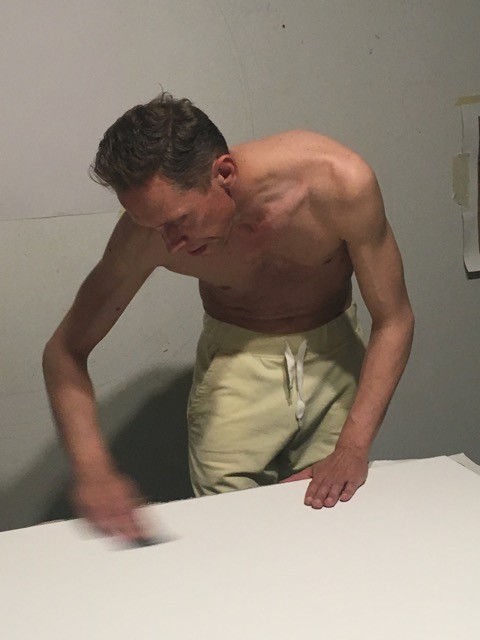OFFICE Kersten Geers David Van Severen with Peter Wächtler and Michael Van den Abeele


Brussels, Belgium
WebsiteOFFICE Kersten Geers David Van Severen is one of the most interesting and uncompromising young architectural practices at work today. It is renowned for its idiosyncratic architecture, in which utopian and unrealized projects are also customary. It does not invent the architecture, but reflects and considers what architecture can signify and be today, reducing the discipline to its bareness and essence. Their architectonic ideas start from geometrical corrections and rather rigid classifications, in order to measure the world as it presents itself to us and to allow life to unfold in all its complexities. OFFICE Kersten Geers David Van Severen was founded in 2002 by Kersten Geers and David Van Severen.
Peter Wächtler (1979) has recently had solo exhibitions at Schinkel Pavillon, Berlin (2017), M HKA, Antwerp (2017), Chisenhale Gallery, London (2016), Renassaince Society, Chicago (2016), Reena Spaulings, New York (2014), Westfälischer Kunstverein, Munster (2014), and dépendance, Brussels (2013). His work has been featured in numerous international group exhibitions, including The Absent Museum, WIELS, Brussels (2017), L’Almanach 16, Le Consortium, Dijon (2016), 2015 Triennial: Surround Audience at the New Museum, New York (2015), the Liverpool Biennial (2014), La Biennale de Lyon 2013, and Pride Goes Before a Fall – Beware of a Holy Whore at Artists Space, New York (2013). The SOTOSO project was an artist-run apartment exhibition coordinated by Peter Wächtler and Hans-Christian Lotz (2011 – 2014) A book of his texts, Come On, was published in 2013 by Sternberg Press.
Michael Van den Abeele (1974), is a Brussels based artist with a practice that combines painting, furniture pieces and the writing of lyrical essays. He is equally a member of the Brussels based exhibition-space Etablissement d’en face. Recent exhibitions include The Squater at Gaudel de Stampa, Paris, France; P P P Punctual at Galerie Levy Delval, Brussels – Belgium and Relax, Galerie Trampoline Antwerp, Belgium, Opacity Please, Museum Leuven, Belgium. He recently published Forked Apologies with FOREST publications.
CAB 2 Contribution
Project Overview
Tower and Palace
The Chicago Tribune Tower competition is an event whose aftereffect in architecture was probably bigger than its impact at the time. Not unlike the post-mortem fame of the Velvet Underground—“All people that bought the original record started a band,” the Loos-Hilberseimer duality is one of historical appropriation. As imposing as each of their projects might be, neither one is a proper tower: in the Chicagoan sense, not in 1922, not today. In hindsight, both buildings are less connected to the problem of the vertical project, and more savvy cultural posturing, projected from overseas. When Mies built his Seagram tower, he was an American architect. Mies’s office was Chicagoan, but his architecture found its real form in a confrontation with McKim Mead and White’s enlarged palazzo of the Racket Club on Park Avenue. It was there that the real themes of building tall and building urban were tackled: a perpetual negotiation between palace and tower, structure and facade. Our tower is conceived as the incremental multiplication working against perspective in height. The structure stacks a family of palazzi, the only European building type that Americans could successfully enlarge and multiply without losing its defining principles: one tower, many palazzi. If the problem of building tall is reduced to multiplication, the negotiation with tectonics, and the desire to be close and far away, takes center stage. Mies understood that right away—his buildings are their own expression. In our complex dance with Peter Wächtler and Michaël Van den Abeele’s art, we merely achieve an approximation: an upside down obelisk.
